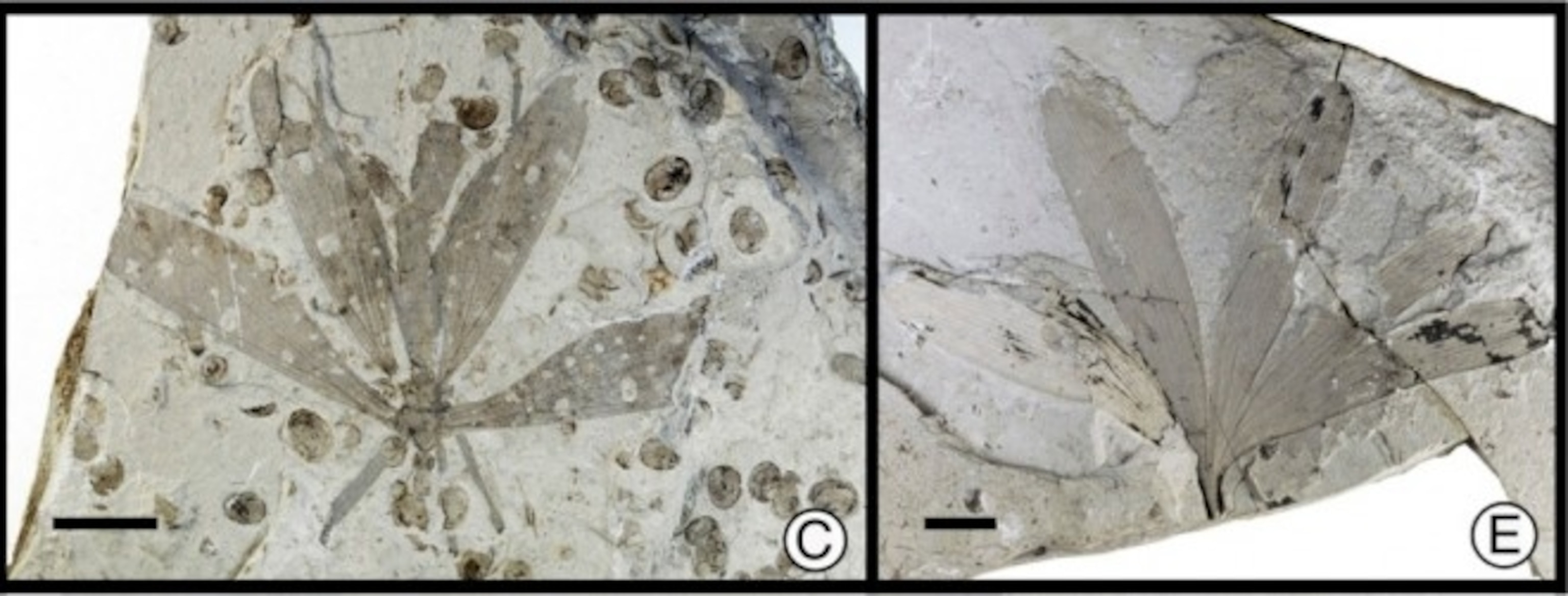At first glance, the newly-named fossil hangingfly Juracimbrophlebia ginkgofolia doesn’t look especially impressive. Found in the roughly 165 million year old beds of China’s Jiulongshan Formation, and described by paleontologist Yongjie Wang and colleagues today in PNAS, the insect looks quite similar to its thin-bodied, stilt-legged, long-winged living relatives. But when taken in context with the various other organisms found in the same beds, a subtle connection comes into focus. The ancient hangingfly, Wang and co-authors propose, was a mimic of Jurassic ginkgo trees.
Mimicry isn’t a new development among insects. The evolutionary connection between arthropods and the vegetation they resemble may go back over 300 million years, and, among modern forms, has adapted insects so intricately that they even show markings similar to fungus and lichen common on the plants they are supposed to look like. Juracimbrophlebia isn’t even the first mimic insect to be found in the high-resolution fossil slabs of the Jiulongshan Formation. Nevertheless, this is the first time a hangingfly has been found to mimic a plant.

In order to blend in on the Jurassic ginkgo Yimaia capituliformis, tricky Juracimbrophlebia had to spread its wings. When held just so, the elongated, veined wings of the insect resembled the multi-lobed shape of the ginkgo leaves. This is assuming that the mimicry hypothesis is correct. The insect and the leaves show a close resemblance, but how can we test this hypothesis 165 million years after these organisms shared the same forest? The hangingfly does resemble the ginkgo, that much is clear, but how can we tell whether or not the insect’s anatomy was a form of camouflage or just coincidentally similar?
But let’s run with the mimicry hypothesis. Under this scenario, Wang and collaborators propose that the hangingfly might have been hiding from the insectivorous mammals, dinosaurs, pterosaurs, lizards, and amphibians that inhabited the same forest. (The same cast of arthropod-crunchers was recently cast as a threat to the katydid Archaboilus musicus, found in the same formation and known from a set of wings researchers recently used to reconstruct the insect’s song.) Alternatively, Juracimbrophlebia might have been a predator itself – the hangingfly could have ambushed the various insects which fed upon prehistoric ginkgo trees. Perhaps the mimicry proved advantageous in both respects. The span of time between us the Jurassic forest prevents us from knowing – such tantalizing traces of prehistoric interactions only come to life in our imaginations.
Reference:
Wang, W., Labandeira, C., Shih, C., Ding, Q., Wang, C., Zhao, Y., Ren, D. 2012. Jurassic mimicry between a hangingfly and a ginkgo from China. PNAS www.pnas.org/cgi/doi/10.1073/pnas.1205517109
